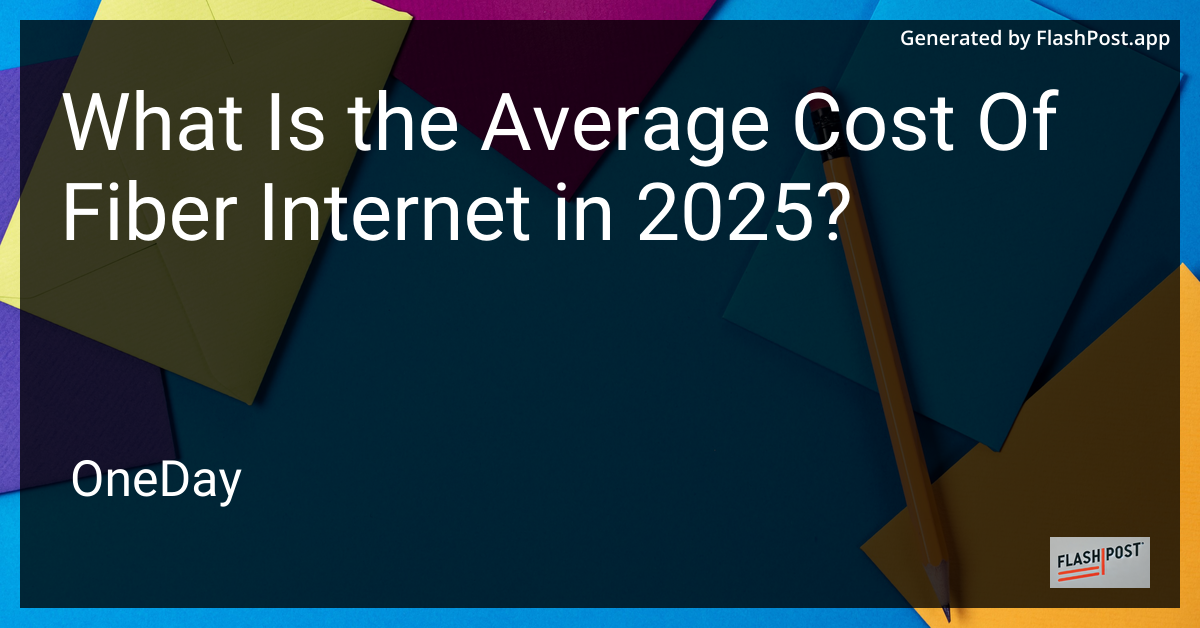
As technology advances, so does the infrastructure enabling our connectivity. Fiber internet, known for its incredible speed and reliability, continues to expand globally. But what can consumers expect when it comes to the average cost of fiber internet in 2025?
The Growing Demand for Fiber Internet
Fiber internet has been increasingly favored due to its ability to handle high data volumes at lightning-fast speeds, with less latency compared to DSL or cable connections. With the increasing demand for high-quality streaming services, remote work solutions, and smart home technologies, the reliance on fiber optic networks is poised to increase dramatically.
Projected Costs Worldwide
By 2025, the average cost of fiber internet is anticipated to vary widely, based on several factors including location, competition among providers, and regional economic conditions. Here's what you can anticipate:
- United States: The cost is expected to stabilize between $60 to $80 per month for residential plans. The increasing competition and partnerships in metropolitan areas will likely lead to more competitive pricing.
- Europe: With established infrastructure in many parts, European consumers may see prices ranging from €40 to €70, depending on the country and urban or rural setting.
- Asia-Pacific: Nations like South Korea and Japan, leaders in internet technology, may offer fiber plans as low as $30 to $50, reflecting their heavy investment in infrastructure and competitive markets.
- Emerging Markets: Costs may remain slightly higher due to ongoing infrastructure development, potentially between $70 to $100, as these regions catch up with technological advancements.
Factors Influencing Fiber Internet Pricing
1. Infrastructure Development:
The maturity of fiber infrastructure plays a significant role in determining costs. Regions with well-developed networks benefit from economies of scale.
2. Competition and Providers:
In areas where multiple internet providers operate, consumers might enjoy more affordable options due to competitive pricing.
3. Government Policies:
Subsidies and government initiatives aiming to improve internet access can impact pricing, often making fiber internet more accessible.
4. Technological Innovations:
Advancements in technology could reduce operational costs, which might be passed on to consumers in the form of reduced monthly fees.
How to Maximize Your Fiber Internet Experience
With the projected costs in mind, it's also essential to ensure your setup is optimized. For instance, if you're experiencing connectivity issues with your devices, such as a gaming console, you might want to explore how to fix PS5 internet problems.
Final Thoughts
Fiber internet pricing in 2025 is expected to be influenced by a variety of factors, including location, provider competition, and technological advancements. While prices may vary globally, the overarching trend points towards more cost-effective solutions as infrastructure continues to develop and demand increases. Regardless of where you live, understanding these dynamics will help you make informed decisions about your internet service in the future.
Lastly, for those exploring technological setups, you might wonder can a wireless printer work without internet in 2025? These considerations will become increasingly relevant as we edge closer to a fully connected world.